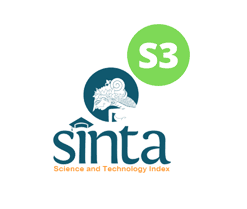Studi potensi ruang terbuka publik berbasis preferensi masyarakat di Kecamatan Turen Kabupaten Malang
DOI:
https://doi.org/10.24843/JAL.2025.v11.i02.p03Keywords:
community needs and preferences, potential development, public open space at district scaleAbstract
Turen District is one of the administrative regions in Malang Regency that has an area of 63.60 km2. This region does not have adequate public open space (POS) to meet the social and cultural needs of its community. As a result, the community lacks space to gather, exercise, and express their identity. This study aims to identify potential land for developing POS at the district scale and to find out what facilities are needed and expected by the community. The analysis method used was descriptive statistics using Ordinal Scale and Guttman Scale to determine the priorities and preferences of the community. Location A was one of the three potential POS locations in Turen District that had an area of 2.4 ha and was located in Turen Village. The research results showed Location A as a strategic location with accessibility priority of the community using private vehicles. In addition, the community wanted POS that could support recreational activities, social interaction, and self-development. The facilities that were the main priority of the community were jogging track, plaza area, children’s playground, and culinary. The recommendation given was to design POS with the concept of Civic Landscape that involved community participation and prioritized the principle of social justice for all groups.
References
Amin, M. A., dan Juniati, D. (2017). Klasifikasi kelompok umur manusia berdasarkan analisis dimensi fraktal box counting dari citra wajah dengan deteksi tepi Canny. Jurnal Ilmiah Matematika, 2(6), 33-42. ISSN: 2301-9115.
Bajuri, F. A., Hidayatullah, M. F., & Kristiyanto, A. (2018). Pemanfaatan fasilitas ruang terbuka/publik sebagai prasarana olahraga. Dalam F. A. Bajuri, M. F. Hidayatullah, & A. Kristiyanto (Eds.), Prosiding Seminar Nasional IPTEK Olahraga (pp. 1-3). Fakultas Olahraga dan Kesehatan Universitas PGRI Banyuwangi.
Barton, H. (2000). The neighbourhood as ecosystem. In H. Barton (Ed.), Sustainable communities: The potential for eco-neighbourhoods (pp. 93-96). Earthscan Publications Ltd.
BPS (Badan Pusat Statistik) Kabupaten Malang. (2022). Kecamatan Turen dalam angka 2022. Badan Pusat Statistik Kabupaten Malang.
Dinas Komunikasi dan Informatika Kabupaten Malang. (2021). Profil Kabupaten Malang edisi 2021. Dinas Komunikasi dan Informatika Kabupaten Malang.
Haryanti, D. T. (2008). Kajian pola pemanfaatan ruang terbuka publik kawasan Bundaran Simpang Lima Semarang [Unpublished master’s thesis]. Universitas Diponegoro.
Hermawan, S., & Amirullah. (2016). Metode penelitian bisnis pendekatan kuantitatif & kualitatif. Media Nusa Creative.
Imansari, N., dan Khadiyanta, P. (2015). Penyediaan hutan kota dan taman kota sebagai ruang terbuka hijau (RTH) publik menurut preferensi masyarakat di kawasan pusat kota Tangerang. Jurnal Ruang, 1(3), 101-110. ISSN: 2356-0088.
Kementerian PUPR (Pekerjaan Umum dan Perumahan Rakyat). (2009). Pedoman penyediaan dan pemanfaatan ruang terbuka non hijau di wilayah kota/kawasan perkotaan. Menteri Pekerjaan Umum dan Perumahan Rakyat.
Natalivan, P. (2007). Ruang terbuka publik, prinsip perancangan dan pengendaliannya. Urban Planning and Design Research Group.
Purwanti, S. (2022). Memaksimalkan fungsi taman kota sebagai ruang terbuka publik. Jurnal Jendela Inovasi Daerah, 5(1), 56-70. ISSN: 2621-8739.
Solghar, N. A., dan Imani, N. (2020). The conceptual framework of civic landscape. Bagh-e Nazar, 17(88), 57-68. 2.
Sugiyono. (2020). Metode penelitian kuantitatif, kualitatif, dan R&D. Alfabeta.
Wambes, W. F., Tilaar, S., dan Warouw, F. (2015). Persepsi dan preferensi masyarakat terhadap penggunaan ruang terbuka publik di lapangan Sparta Tikala Kota Manado. Jurnal Spasial, 2(2), 22-32. 1.
Downloads
Published
Issue
Section
License
Copyright (c) 2025 Lury Yusiana, Made Dirdaedrea Dharma Rinasa

This work is licensed under a Creative Commons Attribution-ShareAlike 4.0 International License.
An author who publishes in the Jurnal Arsitektur Lansekap (JAL) agrees to the following terms:
- Author retains the copyright and grants the journal the right of first publication of the work simultaneously licensed under the Creative Commons Attribution-ShareAlike 4.0 License that allows others to share the work with an acknowledgement of the work's authorship and initial publication in this journal
- Author is able to enter into separate, additional contractual arrangements for the non-exclusive distribution of the journal's published version of the work (e.g., post it to an institutional repository or publish it in a book) with the acknowledgement of its initial publication in this journal.
- Author is permitted and encouraged to post his/her work online (e.g., in institutional repositories or on their website) prior to and during the submission process, as it can lead to productive exchanges, as well as earlier and greater citation of the published work (See The Effect of Open Access).
Read more about the Creative Commons Attribution-ShareAlike 4.0 Licence here: https://creativecommons.org/licenses/by-sa/4.0/.


















